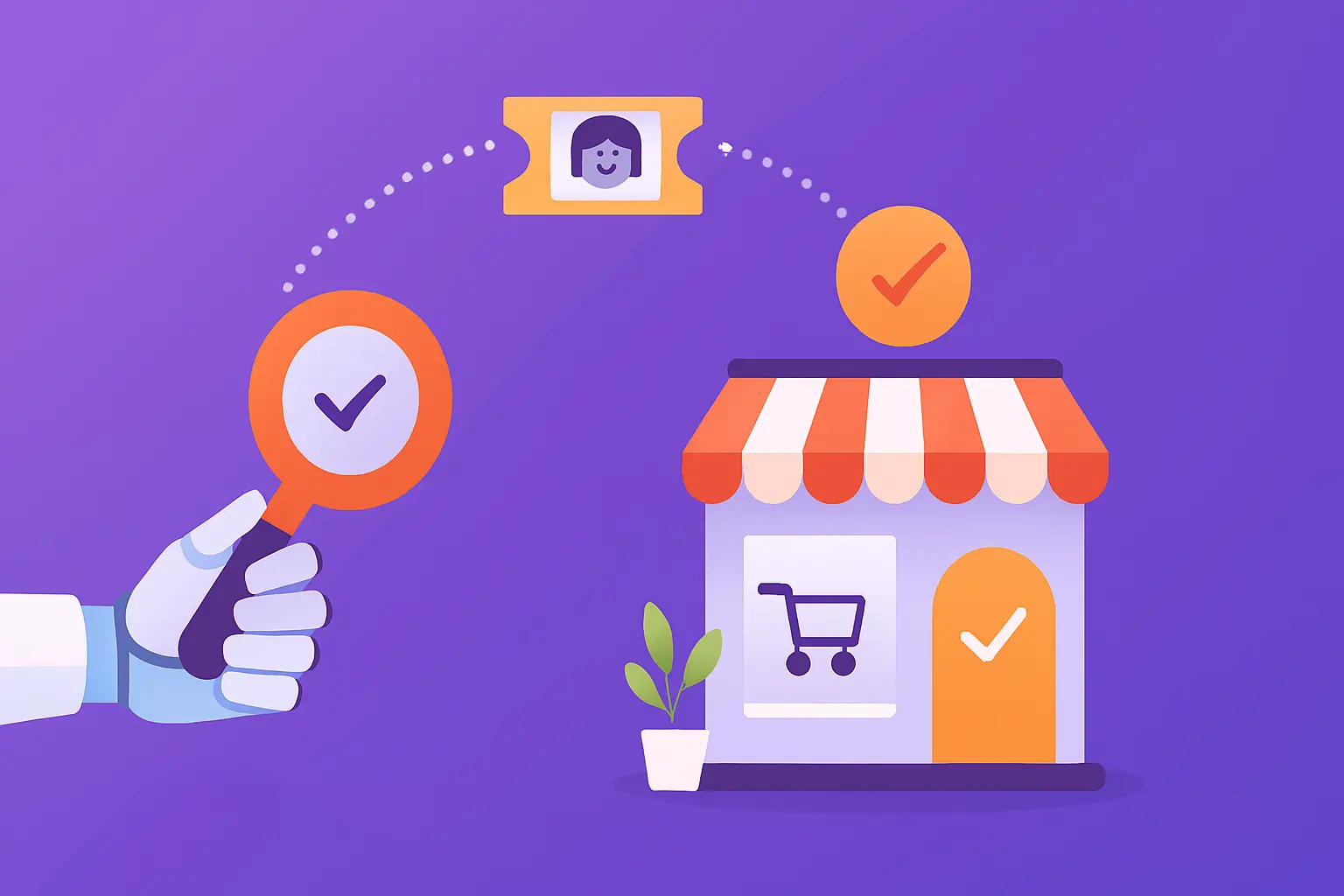Customer Service vs Customer Experience: Key Differences
- April 4, 2023
- 10 mins read
- Listen

What is Customer Experience?
Customer experience (CX) refers to all the interactions a customer has with a company over time. It includes virtually every aspect of the customer’s engagement with the brand, including:- Any customer service received
- Any interaction with the products or services
- Any communication with a department or channel
- Or involvement with any other customer touchpoint in the journey
- The customer experience journey begins when a customer engages with your marketing material like informative content, or ads, or reads a blog about the SaaS product.
- The customer ( a business owner in this case ) continues the CX by visiting the company’s website and exploring the features of the product.
- When the customer has a doubt, there will be immediate contact with service agents via live chat or chatbot.
- The brand-and-customer interactions continue further when the customer signs up for a free trial and receives an email with tutorials, guides, or a knowledge base.
- All the interactions during the onboarding process – when the customer starts using the product and gets personalized assistance – make up the customer experience journey.
- The engagement continues further when the SaaS company updates features and sends newsletters. If the customer experience is positive, the association will go on after the trial ends.
- The customer will make the purchase and then be guided through the setup and use of the software.
- Post-purchase support is provided for product usage and feature exploration.
- The company maintains relationships and enhances customer experience through sales support, feature updates, rewards, and loyalty programs.
What is Customer Service?
Customer service is any assistance, help, and support provided by a business to its customers. It refers to the help offered before, during, and after a purchase. The ambit of customer service is vast and can encompass a wide range of activities, like providing guidance, answering queries, offering advice, fixing issues related to orders, and more. While activities may vary from industry to industry, the ultimate purpose of customer service everywhere is the same: make sure customers have a good experience with the brand and its products/services. When the service is good, it delights the customers and turns them into brand loyalists.Successful businesses understand that delivering excellent customer service is key to winning the hearts and minds of their customers. This is why, customer service is focused more on:- Timely responses – Being available to customers as and when needed and offering them timely responses to enhance their overall experience with the brand.
- Being empathetic – Understanding customers’ problems inside out, hearing each concern in detail, and responding with an air of compassion makes them have a positive experience.
- Helping customers across channels – Having a presence across channels is key to ensuring an omnichannel customer journey as customers love using the channel of choice to connect and engage with a business.
- Live chat – It’s a key tool for responding to customer queries in a quick time.
- Chatbot – It helps automate responses and ensures 24×7 service.
- Help desk software – It’s ideal for ticket and issue tracking.
Key Difference Between Customer Service & Customer Experience
By now, we have understood customer service and customer experience in detail. Let’s move ahead and understand the key difference between them.| Aspect | Customer Experience (CX) | Customer Service |
| Definition | A holistic approach | A subset of customer experience |
| Scope | Includes the entire journey of a customer with a brand, from the first interaction to ongoing engagements. | Focuses on providing help, support, or guidance to customers during specific interactions. |
| Touchpoints | Involves multiple departments and numerous touchpoints throughout the customer’s journey. | Limited to one or two touchpoints |
| Contributors | Every department, whether marketing, sales, or customer service, is key to CX. | Customer-facing departments are the key elements to address specific customer needs |
| Focus area | Proactive in approach with a focus on anticipating customer needs and designing engagements to ensure satisfaction at every stage of the journey. | Reactive in approach with focus on addressing customer issues as they arise, typically immediate and short-term in nature. |
| Metrics | Metrics include Net Promoter Score (NPS), Customer Satisfaction Score (CSAT), Customer Lifetime Value (CLV), and Customer Retention Rate (CRR). | Metrics include Response Time, Average Resolution Time (ART), and Issue Resolution Rate, focusing on specific service interactions. |
1) Scope
Customer experience (CX) is a holistic approach and points to the overall journey of a customer with a brand. It starts the moment a customer knows about the brand or the moment the customer comes in contact with the brand. All the interactions a customer has continue to the CX journey. Customer service is not holistic in approach and it rather is a subset of customer experience. During their customer experience journey, a customer may need help, support, or guidance on one occasion, or sometimes, on more than a few occasions. All the queries answered issues resolved, or guidance provided to customers are part of customer service.2) Touchpoints
Customer experience reflects the entire customer journey. When we talk about the entire customer journey, it means the involvement of multiple departments that work in unison to create a positive customer experience. This is why, CX involves multiple touchpoints, including sales, marketing, customer service, and more. They together contribute to influencing customer’s perception of the brand. Customer service is just one aspect or step of a customer experience journey. Its role is to solve customer’s issues and improve their overall experience with the brand. Since it’s a part of CX, just one or two touchpoints make customer service. Not all customers need help during their journey but some may do, it once, or more, and customer-facing departments are enough to play the part.3) Proactivity vs reactivity
Customer experience is based on proactive measures. When a brand focuses on CX, it has to anticipate customer needs and then design engagement accordingly. The main focus is on keeping interactions in a way that leads to satisfaction at every stage of the customer journey. Everything is planned well in advance, like how to catch customer attention, how to drive them through the funnel, how to build loyalty and encourage repeat purchases. Customer service is reactive and aims to deal with issues as they come up. Proactive elements are mostly absent, though not always, as the focus is more on reacting to the needs of customers. So, we can say customer service is immediate and short-term.4. Key metrics
Customer loyalty and overall satisfaction are key elements of customer experience. Businesses often need comprehensive metrics to measure CX. Some of the key metrics to measure customer experience include Net Promoter Score (NPS), Customer Satisfaction Score (CSAT), Customer Lifetime Value (CLV), and Customer Retention Rate (CRR).Customer service measurements are not complex as they are specific to supporting interactions. They only involve service-related metrics to measure the level of service provided to customers. Some of the key metrics that are used to measure customer service include Response Time, Average Resolution Time (ART), and Issue Resolution Rate.Customer Service vs Customer Experience – Which Matters More?
Both customer service and customer experience (CX) play key roles in a business’s growth and success. Both hold value depending on the context and specific business goals. Let’s look at key stats suggesting why customer service matters more:- 96% of customers accept that customer service is key to their choice of loyalty to a brand.
- A McKinsey report says that 75% of customers expect assistance within five minutes of contacting customer service.
- 86% of buyers are willing to pay more for a great customer experience.
- PwC survey found that one negative experience is enough for 1 in 3 customers to leave a brand they love.
- According to a CX stat, 13% of customers, who are not happy, will share their experiences with 15 or even more people.
Key Takeaways
Despite the differences, customer service and customer experience are interconnected and work hand-in-hand when it comes to improving customer satisfaction and building trust. Ultimately, your business needs to prioritize both if it wants to forge long-term relationships with customers. Offering excellent service and experiences is the only thing that can help you stay competitive in the fast-paced market today. That’s why, you should consider investing in the right platform to enhance the value of CS and CX for your customers. REVE Chat’s customer engagement tools will help you serve your customers well and improve their experiences across touchpoints. We offer a complete range of customer service and CX solutions including live chat, AI chatbot, ticketing system, video chat, and co-browsing to help you excel at excellent service delivery. So, you can sign up and test some of the best customer engagement tools for your business.Frequently Asked Questions
Understanding the differences between customer experience and customer service helps businesses develop more effective engagement strategies for their customers. Without understanding the differences, a business can’t improve all aspects of the customer journey and will fail to forge stronger relationships or gain trust.
Yes, a company can provide good customer service but a poor customer experience (CX). Providing good customer service is easy as a business can focus on specific interactions, solve problems quickly, and make customers happy. However, delivering a good customer experience is reliant on many aspects of the customer journey and that’s why companies find it tough to maintain consistency in CX.
Customer experience involves more touchpoints as it takes care of all the interactions and engagement a customer has with a brand. It involves more touchpoints because it needs to consider engagement across various channels and stages of the customer journey.
Customer service is a key element of the broader customer experience journey. Excellent customer service can delight customers, improve their satisfaction level, and make them loyal to brands. All this can result in improved overall customer experience. On the other hand, bad customer service can lead to a negative perception of the brand, resulting in a diluted customer experience.
Here are some of the ways a business can integrate customer experience and customer service:
1.Adopt a customer-centric approach
2.Keep the messaging consistent across touchpoints
3.Provide a positive experience
4.Use technology to improve customer support
5.Collect and analyze customer feedback




